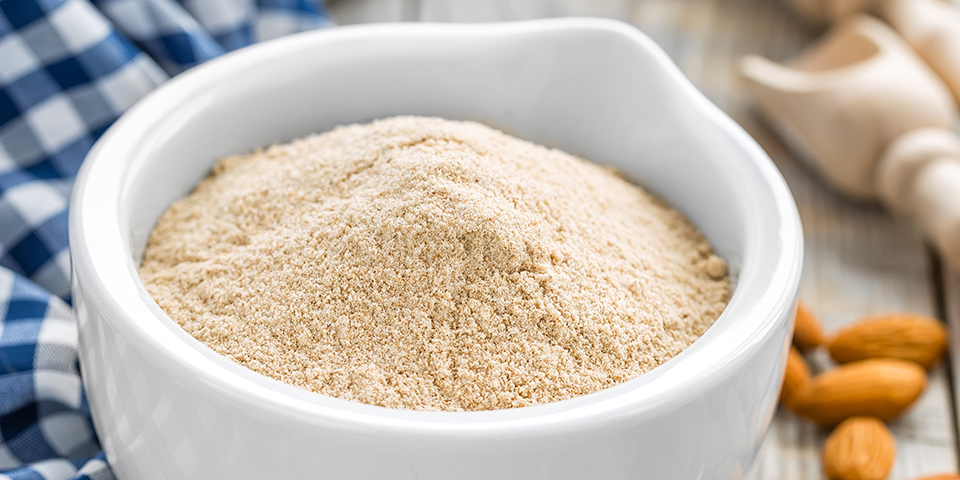Almond flour is one of the most popular ingredients in baking, especially for those with gluten allergies. But what happens when your almond flour has passed its expiration date? Can you still use it? The answer is not as simple as a yes or no, so let’s explore why this is an important question to ask before using expired almond flour.

Table of Contents
How Long Does Almond Flour Last?
Almond flour generally has a shelf life of about one year when stored properly in a cool, dark place. If you store it in the refrigerator or freezer, its shelf life can be extended up to two years.
However, that does not mean that it will necessarily go bad after one year; there are many factors at play here.
What Happens When You Use Expired Almond Flour?
The most common issue associated with expired almond flour is rancidity (or oxidation). Rancid foods can cause adverse health effects if consumed in large quantities, so it’s important to look out for any signs that your almond flour might be rancid.
This includes discoloration, a strange smell, and/or an off-taste. If the almond flour looks and smells okay but tastes off when you try a small bit of it, then chances are that it has gone bad and should not be used.
Just because your almond flour is past its expiration date does not necessarily mean that it has gone bad; however, it is always better to err on the side of caution and replace any expired almond flour with fresh ingredients just to be safe.
Another issue with using expired almond flour is potential nutrient loss. Almonds contain several essential nutrients such as protein, fiber, healthy fats, vitamins, and minerals like vitamin E and magnesium. As almond flour ages, these nutrients may start to degrade over time which can affect the nutrition profile of your baking.
If you do decide to use expired almond flour, make sure it looks dry and has no visible signs of mold or discoloration before using it in recipes.
Additionally, try adding more spices or flavoring agents such as vanilla extract or cocoa powder to mask any off-flavors from oxidation. If possible, it’s best to purchase fresh almond flour for better results and optimal nutrition benefits.
FAQs
Does Maseca expire?
Yes, Maseca products have an established expiration period. This is indicated on the product label, which reads “Best Before” followed by a date.
Generally, Maseca products should be consumed before this date for optimal taste and quality. However, it is safe to consume Maseca past its expiration as long as it has been stored in an airtight container and in a cool, dry place.
It is best to use the product before the expiration date for optimal quality.
Read more:
The Truth About Flour: Can Almond Flour Be Used As A Thickener?
Does Almond Flour Taste Like Almonds? A Guide to Almond Flour
How to tell if millet has gone bad?
If millet has gone bad, it will have a sour or unpleasant smell. Additionally, the texture of the grain may be slimy and discolored.
It is best to discard any millet that shows any signs of spoilage as consuming spoiled food can cause food poisoning.
If you are unsure whether the millet has gone bad, it is recommended that you do not consume it.
If stored properly, millet should last for up to one year. It is important to store the millet in a cool and dry place, away from direct sunlight, as this may cause the grain to spoil faster. It is also beneficial to transfer the millet into an air-tight container after opening, as this will help keep the grain fresh for longer.
When storing millet, it is essential to ensure that the container it is in has a secure lid and that there are no holes or cracks where air or moisture can enter.
Finally, make sure to check the expiration date on any pre-packaged millet before purchasing.
If you follow all of these tips, you can store millet for up to one year and enjoy its delicious nutty flavor.
Does coconut flour expire?
It is important to keep in mind that coconut flour does not have an indefinite shelf life.
As with most food items, coconut flour will eventually expire and it is essential to understand when this occurs so as to ensure optimal safety and quality of the product.
Coconut flour can last a while unopened – up to two years if stored properly in a cool, dry place.
Once opened, the shelf life of coconut flour is reduced and it is typically recommended to use within a few months after opening.
One way to ensure optimal freshness and quality is to store the coconut flour in an airtight container at all times, including when using it for baking or cooking. Additionally, checking for any signs of spoilage such as discoloration, an off-putting odor, or changes in texture can help determine when it is time to replace the coconut flour.
Finally, it is important to note that the consumption of spoiled coconut flour can be unsafe and should not be done under any circumstances. If at any point you are unsure about the safety of the product, it is best to simply discard it and purchase a new batch.
Keeping these tips in mind can help you make sure that you are using only fresh coconut flour when baking or cooking. By understanding how long coconut flour lasts unopened and opened, as well as being mindful of signs of spoilage, you can ensure the highest quality and safety of your coconut flour.

Conclusion
Using expired almond flour can be a risky proposition since many factors affect whether or not the product has gone bad. While some people may choose to take their chances and use expired almond flour anyway, we recommend erring on the side of caution and replacing any expired items with fresh ones for safety reasons. With proper storage techniques and regular inspections for signs of spoilage, you can ensure that your baked goods made with almond flour remain safe to consume!
References:
https://www.sciencedirect.com/science/article/abs/pii/S0260877408000198
https://link.springer.com/article/10.1007/s13197-020-04608-x
https://www.scielo.br/j/cta/a/Dg3DDYJVzMxMfysQQj67MnD/abstract/?lang=en








